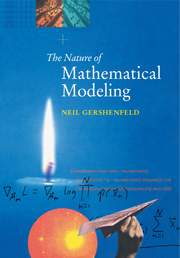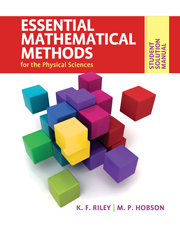The Nature of Mathematical Modeling
This 1998 book, about the nature and techniques of mathematical modeling, is oriented towards simple efficient implementations on computers. The text is in three sections. The first covers exact and approximate analytical techniques; the second, numerical methods; the third, model inference based on observations; and the last, the special role of time in modeling. Each of the topics in the book would be the worthy subject of a dedicated text, but only by presenting the material in this way is it possible to make so much material accessible to so many people. Each chapter presents a concise summary of the core results in an area, providing an orientation to what they can (and cannot) do, enough background to use them to solve typical problems, and pointers to access the literature for particular applications. The text is complemented by extensive worked problems.
- Unique summary of all of modern mathematical modeling methods
- Author from the world-famous Center for Bits and Atoms at MIT
- Appropriate as text/reference work for students and researchers in any quantitative or semi-quantitative subject area
Reviews & endorsements
"In a compact but accessible manner, Gershenfeld offers a wide-ranging overview of mathematical ideas and techniques that provide a number of effective approaches to problem solving...a great compendium of techniques. It should be kept within easy reach of anyone who wants to build computer models to help understand the world
Science
"...masterfully written, fun to read, and brimming over with useful information....This text is a marvelous handbook of mathematical modeling."
UMAP Journal
"Gershenfeld's style of giving brief overviews together with a concise summary of key results in the subject area makes [the book] invaluable for mathematical and computational modelers...Highly recommended."
Choice
"...I do not know any other single source of the material presented here."
Michael Marder, Physics Today
"Neil manages to combine new and old flavors like analysis and stochastic modeling, finite element methods and cellular automata, nonlinear function minimization and information-theoretic system identification in a single integrated overview that exposes the purposes and capabilities of each. Any of these areas can be a black hole, capable of swallowing a student in detail, with no observable output. This book performs the valuable service of teaching novice or practitioner of what the methods can offer to the overall purpose of modeling the world around us or before us."
Scott Kirkpatrick, IBM Research, inventor of simulated annealing
"This is a book for anyone who wants to use a computer to build models. The book draws on an enormous variety of sources, but Gershenfeld has seen through to the core ideas and has brought out the key relationships between the various methods. The book is a pleasure to read."
Michael I. Jordan, University of California, Berkeley
"Simulation and mathematical modeling will power the 21st Century the way steam powered the 19th. Gershenfeld masterfully compresses two armloads of dense textbooks into a single clear volume, including both classic and avant garde methods, and with well-selected references for further study. Every student of computing needs this book as the entry ticket into a vital and rapidly changing field."
William H. Press, Harvard University, author of Numerical Recipes
"The sheer breadth of material that this book surveys and unifies in surprising ways is one strong recommendation for including The Nature of Mathematical Modeling in your library. Readers will profit from physicist Neil Gershenfeld's background as he draws connections among the many, often seemingly disparate, facets of mathematical modeling...And, of course, this is a book for practicing mathematicians, computer scientists, physicists, engineers, and any and all others interested in both standard and not so standard techniques viewed in the rich and stimulating context that this book provides."
The American Mathematical Monthly
"This is a well-written and interesting book. It would make an excellent text for a final-year undergraduate course in modeling and a good reference for research students in any situation where data are to be examined."
Computing Reviews
"The exposition of the text is fluent and engrossing...As a mathematician I found many of the topics discussed in the text interesting and worthy of further investigation. I would certainly recommend the text to a colleague interested in understanding the connections that exist among the seemingly unrelated techniques of applied mathematics."
MAA Online
Product details
June 2011Paperback
9780521210508
358 pages
244 × 170 × 19 mm
0.57kg
Available
Table of Contents
- Preface
- 1. Introduction
- Part I. Analytical Models:
- 2. Ordinary differential and difference equations
- 3. Partial differential equations
- 4. Variational principles
- 5. Random systems
- Part II. Numerical Models:
- 6. Finite differences: ordinary difference equations
- 7. Finite differences: partial differential equations
- 8. Finite elements
- 9. Cellular automata and lattice gases
- Part III. Observational Models:
- 10. Function fitting
- 11. Transforms
- 12. Architectures
- 13. Optimization and search
- 14. Clustering and density estimation
- 15. Filtering and state estimation
- 16. Linear and nonlinear time series
- Appendix 1. Graphical and mathematical software
- Appendix 2. Network programming
- Appendix 3. Benchmarking
- Appendix 4. Problem solutions
- Bibliography.






